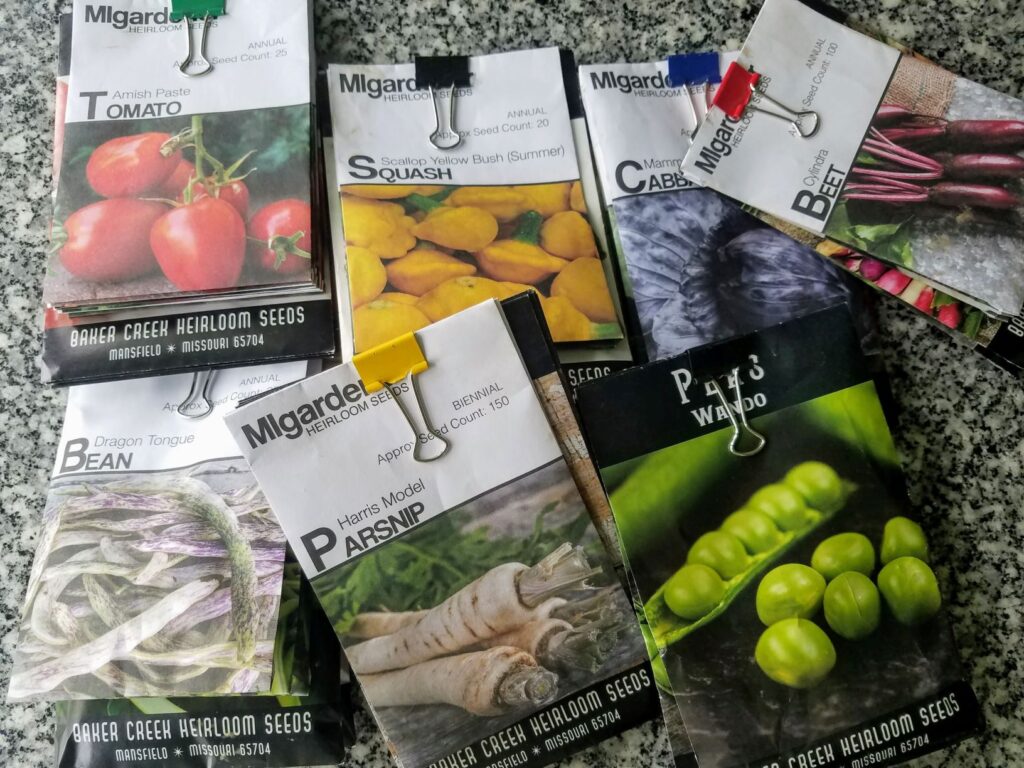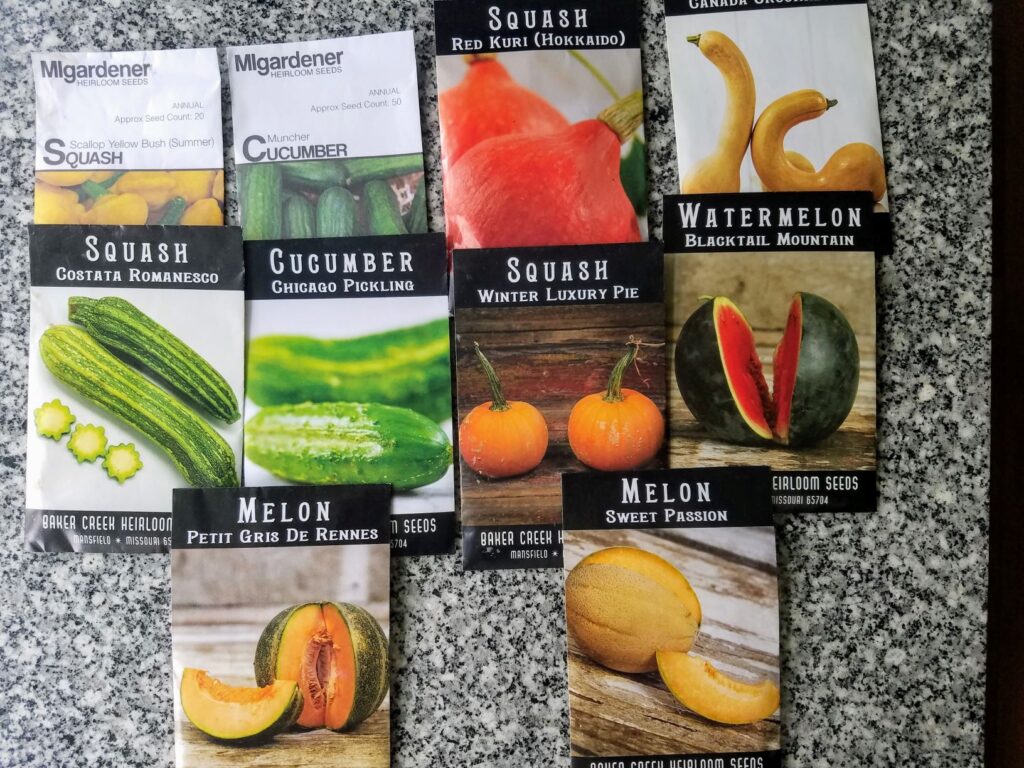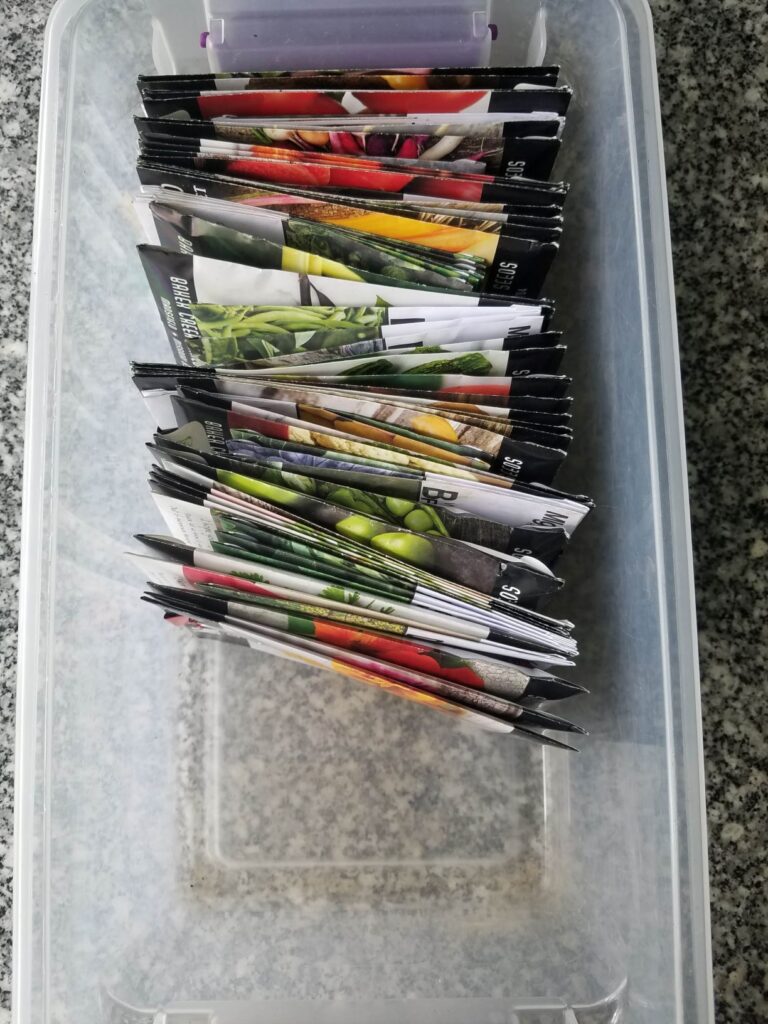We have reduced the varieties of vegetables we’re growing by about 40. But we still have 60-70 varieties we’re growing this year. I’ll share with you today how we buy and organize our seeds.

Where we get our seeds from
In the last several years, we have been getting our garden seeds almost exclusively from Baker Creek. This year, we decided to also give MIgardener a try.
Baker Creek has more varieties than MIgardener currently has, ships for free, and gives free seeds with every order. Usually, those free seeds end up being something that does very well in our garden. We love Baker Creek and have never had any issues with them. They will even double ship or overpack if they know a seed batch is showing a low germination rate. How’s that for customer service? Their seeds run about $2.75-4.50 per packet.
MIgardener has a lot of variety and sells most seeds for 99¢ per packet, which is great for small family gardens. They charge shipping, though not an exorbitant amount.
If you are only buying a few packets of seeds, it might be worth comparing the two to see which is the best deal. We ended up getting as many of our seeds from MIgardener as we could. The rest we purchased from Baker Creek. Those were either varieties I specifically wanted and MIgardener didn’t offer or didn’t have in stock yet and I was too impatient to wait.

Live plants
Last year, we bought seed potatoes, sweet potato slips, and asparagus crowns from Stark Brothers. Because of the unusually cold and wet June we had, only half of the 25 sweet potato slips survived. Only 4 of the 20 asparagus crowns made it. Weather is a grower’s unreliable nemesis.
Potatoes — Last year we grew 3 varieties and they did fine! This year we decided to go directly to the farm, Wood Prairie Family Farm, and we bought 4 varieties. Talking with Wood Prairie Family Farm has revealed they are super nice and very easy to work with. We highly recommend them!
Sweet potatoes — Even though only half our slips survived last year, we still ended up with over 80 lbs of sweet potatoes! We are growing Georgia Jet variety again this year, but we only ordered a dozen slips and this time from Southern Exposure Seed Exchange.
Other — We didn’t order any more asparagus crowns or fruit this year. Stark Brothers does have a great variety of perennial fruit and vegetable plants and is who we ordered our apple and mulberry trees from. Those trees are doing great! I noticed MIgardener is also offering asparagus crowns as well as berry plants and canes. When we ordered our blueberry, strawberry, elderberry, and blackberry plants a couple of years ago, we bought them from Backyard Berry Plants. They also have great customer service with help in choosing varieties and information on how to plant and care for the berry plants.
Storing seeds
We use a plastic shoebox to store our seeds. It’s the perfect size for packets to fit in and won’t be easily damaged by the inevitable moisture in the garden. We sort and clip the packets together by family groups, such as squash or tomatoes, or by things that are planted at about the same time, such as greens or root veggies. This helps to more easily find seed envelopes in the box, also.
The shoe box is also a good size for cold storage during winter. But don’t make our accidental mistake and store them in a hot environment, like a shed, during planting season. Cooked seeds are dead seeds and won’t germinate.

The Living Seed
Speaking of living seeds, each seed has a tiny plant in it that can grow and produce fruit and many seeds. Each of those seeds has a tiny plant able to grow and produce more fruit and seeds. And so on. Isn’t it amazing to look at a seed and see God’s unending provision in it?
How do you buy and organize seeds?
We love new ideas. Tell us how you buy and organize seeds!
Watch our Video on How to Buy and Organize Seeds
Also, check out these posts

Leave a Reply